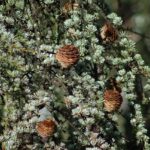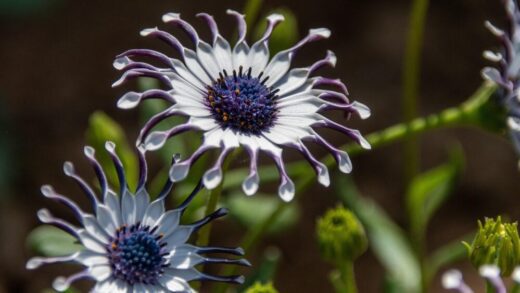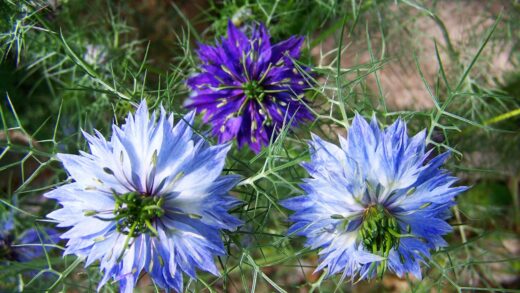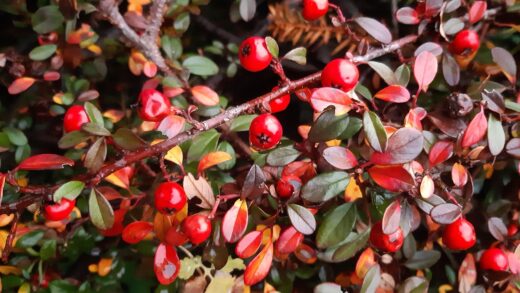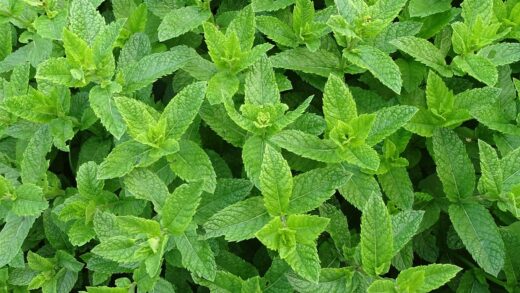Fulfilling the light requirements of the peach-leaved bellflower is a cornerstone of its successful cultivation, directly influencing its growth habit, flowering potential, and overall health. This adaptable perennial has a clear preference for a specific range of light conditions that closely mimic its native habitats on the fringes of woodlands and in sun-dappled meadows. While it is often described as a plant for full sun to partial shade, understanding the nuances of what this means in your specific climate and garden location is key to unlocking its full beauty. The quantity and intensity of sunlight it receives will dictate the sturdiness of its stems, the richness of its leaf colour, and, most importantly, the profusion of its signature bell-shaped blooms.
In an ideal setting, the peach-leaved bellflower will receive at least six hours of direct sunlight each day. This is particularly true in cooler, more northern climates where the sun’s intensity is less pronounced. Ample sunlight provides the energy the plant needs for photosynthesis, fuelling the development of a strong root system and the production of a generous number of flower stalks. In these conditions, the plant tends to grow more compactly, with sturdy stems that are better able to support the weight of the flowers without the need for staking. The flower colour may also be more vibrant and intense when the plant is grown in sufficient sun.
However, the “full sun” recommendation comes with an important caveat, especially for gardeners in warmer regions. In climates with hot, intense summer sun, some protection during the hottest part of the afternoon is highly beneficial. The scorching midday and afternoon sun can cause stress to the plant, leading to wilting, faded flowers, and even scorched leaves. In these areas, a “partial shade” location, such as one that receives direct morning sun but is shaded during the afternoon, often provides the perfect balance. This allows the plant to receive the energy it needs without suffering from the damaging effects of excessive heat and light intensity.
Ultimately, the goal is to find the sweet spot in your garden that balances the plant’s need for energy with its need for protection from stress. Observing the plant’s response to its location is the best way to determine if its light needs are being met. A plant that is stretching towards the light with sparse foliage and few flowers is likely not receiving enough sun. Conversely, a plant with pale, scorched leaves may be getting too much intense light. By carefully selecting the planting site, you can provide the ideal light conditions for your peach-leaved bellflower to thrive and reward you with its elegant and timeless beauty.
The ideal balance of sun and shade
The peach-leaved bellflower demonstrates a considerable degree of adaptability when it comes to light, but its optimal performance is achieved within a specific range. The phrase “full sun to partial shade” accurately describes its preferences, but the ideal point on this spectrum is largely dependent on the climate. In regions with cool summers and less intense sunlight, such as the UK or the Pacific Northwest of North America, planting in a position that receives full sun for six or more hours a day is generally recommended. This amount of light encourages the most prolific flowering and the strongest, most upright stems.
More articles on this topic
In contrast, in warmer climates like the southern United States or Mediterranean regions, the intensity of the summer sun can be harsh. In these areas, providing the plant with partial shade is crucial for its well-being. The ideal partial shade location is one that receives several hours of gentle morning sunlight but is shielded from the direct, intense rays of the afternoon sun. This could be on the east-facing side of a building, or underneath the canopy of high-branched deciduous trees that provide dappled light throughout the day. This protection helps to conserve soil moisture, keeps the roots cool, and prevents the foliage and flowers from scorching.
The quality of the shade is also an important consideration. The peach-leaved bellflower will not perform well in deep, dense shade, such as that found under evergreen trees or on the north side of a tall wall. In such low-light conditions, the plant will become leggy and etiolated, meaning it will produce long, weak stems as it stretches in a desperate search for light. The foliage will be sparse, and flowering will be significantly reduced, if it occurs at all. The plant needs a good amount of bright, indirect light even when it is in the shade.
Therefore, the perfect site is one that strikes a delicate balance. It provides enough direct sunlight to fuel robust growth and abundant flowering but offers enough protection to mitigate the stress of excessive heat. When you are selecting a site, observe the way the sun moves across your garden throughout the day and at different times of the year. This will help you to identify the microclimates that exist and to choose the spot that best meets the specific light requirements of this beautiful perennial.
The effects of insufficient light
When a peach-leaved bellflower is planted in a location that provides insufficient light, it will exhibit several clear and distinct symptoms. The most obvious of these is a change in its growth habit. The plant will become “leggy,” producing elongated, thin, and weak stems. This is a survival mechanism known as etiolation, where the plant diverts its energy into rapid stem growth in an attempt to reach a source of brighter light. These stems will be pale in colour and will not have the structural integrity to stand upright, resulting in a floppy, untidy appearance that often requires extensive staking.
More articles on this topic
Flowering is also severely impacted by a lack of adequate sunlight. Photosynthesis, the process by which plants convert light into energy, is the engine that drives flower production. In low-light conditions, the plant simply cannot generate enough energy to support the development of numerous flower buds. As a result, a plant grown in too much shade will produce far fewer flowers than one grown in sufficient sun. The flowers that are produced may be smaller in size, and their colour may appear washed out or less vibrant. In conditions of very deep shade, the plant may fail to flower altogether, producing only sparse foliage.
The overall health and vigour of the plant will also decline in overly shady conditions. The sparse foliage will be less efficient at photosynthesis, creating a cycle of low energy production and weak growth. The plant’s root system may not develop as robustly, making it less resilient to drought and other environmental stresses. Furthermore, the poor air circulation and higher humidity often found in shady, crowded locations can make the plant more susceptible to fungal diseases such as powdery mildew, further compromising its health.
If you notice these symptoms in your peach-leaved bellflower, it is a strong indication that it needs to be moved to a sunnier location. The best time to transplant the plant is in the early spring or autumn. When you move it to a site that provides more direct light, you will likely see a dramatic improvement in its performance in the following growing season, with stronger stems, more abundant foliage, and a much more impressive floral display.
The challenges of excessive light
Just as too little light can cause problems, too much intense sunlight can also be detrimental to the health and appearance of the peach-leaved bellflower, particularly in hot climates. The most immediate and visible sign of excessive light stress is leaf scorch. This occurs when the leaf tissue is damaged by the combination of intense sunlight and high temperatures. The affected leaves will develop brown, dry, or crispy patches, often starting at the edges and tips. In severe cases, large portions of the leaf can be damaged, which reduces the plant’s ability to photosynthesize and can make it more vulnerable to pests and diseases.
Another symptom of heat and light stress is wilting. During the hottest part of the day, the plant may lose water through its leaves (transpiration) faster than its roots can absorb it from the soil. This causes the leaves and stems to lose their turgidity and droop. While the plant may recover in the evening as temperatures cool, repeated and severe wilting places a great deal of stress on the plant, weakening it over time and potentially affecting its long-term health and flowering capacity.
The flowers themselves can also be negatively affected by an excess of intense sun. The delicate petals can become faded, bleached, or even scorched, shortening the life of each individual bloom and diminishing the overall quality of the floral display. The vibrant blues, purples, and whites that are so characteristic of the species will appear washed out and less impressive. The plant is essentially trying to protect itself, and this can mean a less spectacular show for the gardener.
To mitigate the effects of excessive light, providing afternoon shade is the most effective solution. If transplanting the plant is not feasible, you can try to create artificial shade using taller companion plants or a temporary shade cloth during the most intense weeks of summer. Ensuring the plant is well-watered during hot periods is also crucial, as moist soil helps to keep the roots cool and allows the plant to cope better with the stress of the heat. Applying a layer of organic mulch around the base of the plant can also help to keep the soil cool and retain moisture.
Seasonal light considerations
The light requirements of the peach-leaved bellflower can also be viewed through the lens of the changing seasons. In the spring, as the new basal foliage emerges and the flower stalks begin to grow, it is important for the plant to receive as much light as possible to build up the energy reserves needed for the coming flowering season. If the plant is situated under a deciduous tree, it will benefit from the full sun it receives before the tree’s leaves have fully emerged, giving it a strong start to the season.
During the peak flowering period in early to mid-summer, the balance between sufficient light for blooming and protection from intense heat becomes most critical. This is when the benefits of an east-facing location or a site with dappled afternoon shade are most apparent. The goal is to provide enough light to sustain the magnificent floral display without causing the flowers to fade prematurely or the plant to suffer from heat stress. Regular monitoring of the plant’s condition during this time will allow you to make any necessary adjustments, such as providing extra water.
As summer transitions into autumn, the intensity of the sun begins to wane. The plant is no longer in its active flowering phase and is beginning to shift its energy towards its roots in preparation for winter dormancy. The lower light levels of autumn are generally not a concern for the plant at this stage. The semi-evergreen basal rosette will continue to photosynthesize as long as conditions allow, storing energy for the winter ahead.
Even in winter, light can play a role, albeit a less direct one. In regions with strong winter sun, the combination of bright sunlight and frozen ground can lead to a condition known as winter scorch on the evergreen foliage. This is another reason why a location with some protection from the harshest elements can be beneficial year-round. By understanding how the sun’s path and intensity change with the seasons, you can make a more informed decision about the permanent placement of your peach-leaved bellflower, ensuring its needs are met throughout its entire annual cycle.








